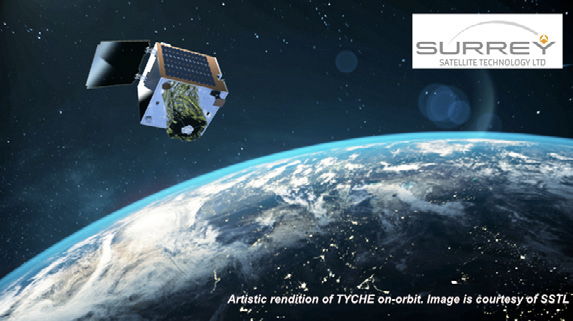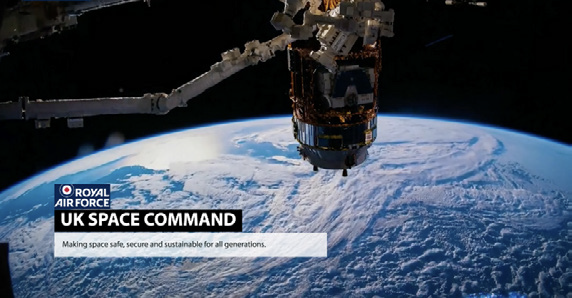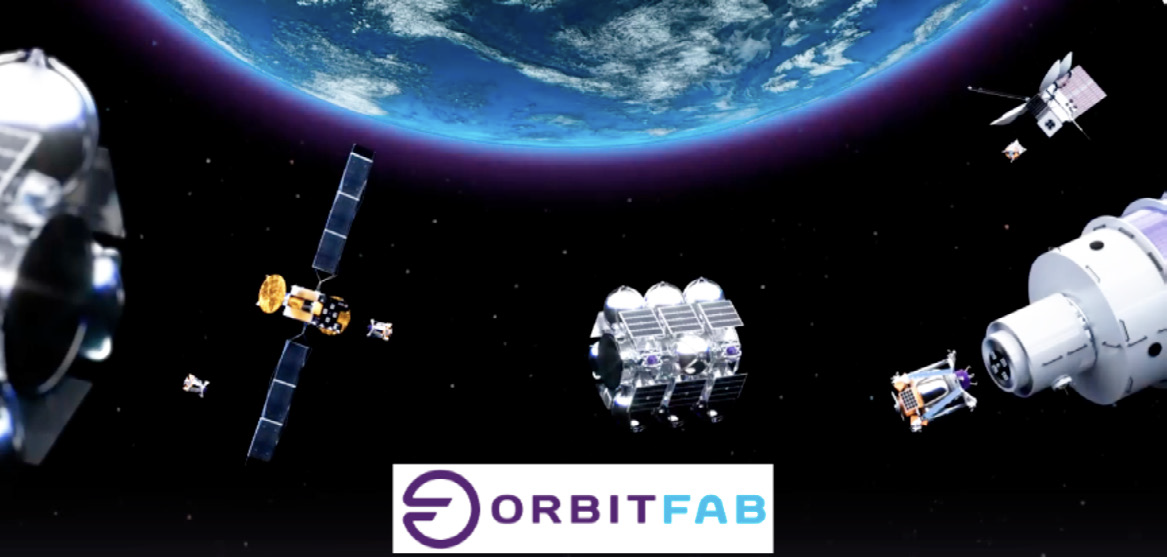UK Space Command successfully launches first military satellite
A UK satellite to support military operations has been successfully launched. Named Tyche, the satellite is UK Space Command’s first satellite which can capture daytime images and videos of the Earth’s surface. The satellite will strengthen the UK’s Intelligence, Surveillance, and Reconnaissance (ISR) capabilities.


As the conflict in Ukraine has shown, the use of space is crucial to military operations. Tyche is the first satellite to be launched under the UK Ministry of Defence’s space-based ISR program, which will deliver a constellation of satellites and supporting ground systems by 2031.
These satellites will support military operations as well as contribute to other government tasks, including natural disaster monitoring, the development of mapping information, environmental monitoring and tracking the impact of climate change around the world.
Designed and built in the UK through a £22 million contract awarded by Defence Equipment & Support to Surrey Satellites Technology Limited (SSTL), Tyche is the first satellite to be fully owned by the Ministry of Defence.
SSTL received the first signals from Tyche – which is comparable in size to a washing machine – a few hours after lift-off, confirming the successful launch. Operating in LEO over a five-year lifespan, Tyche will provide timely space-based imagery in support of the UK Armed Forces. The design and build of the 150-kilogram satellite has supported around 100 high-skilled roles at SSTL since 2022. Tyche was launched from Vandenberg Space Force Base, California, by SpaceX, on their re-usable Falcon 9 rocket, as part of the Transporter 11 mission. Minister for Defence Procurement and Industry, Maria Eagle, said.
“Tyche will provide essential intelligence for military operations as well as supporting wider tasks across government. Tyche also shows the UK’s commitment to support innovation in science and technology, stimulating growth across the sector and supporting highly skilled jobs in the UK.” UK Space Commander, Major General Paul Tedman, said, “This is a fabulous day for UK space.
The successful launch of Tyche has shown that UK Space Command, and its essential partners across defence and industry, can rapidly take a concept through to the delivery of a satellite capability on orbit. Tyche represents the first of a future constellation of Intelligence, Surveillance, and Reconnaissance satellites that we’ll launch over the coming years. I’d like to take this opportunity to congratulate everybody involved with Tyche and thank them for their support.”
Paul Russell, DE&S Space Team Leader, said, “Working closely with UK Space Command, Dstl and industry to understand how to deliver in a new, complex and critical environment has been an exciting journey. To see Tyche – the first of a new generation of UK military capabilities – delivered into orbit is an incredibly proud moment and a tribute to everyone’s commitment to this key project.”
Anduril is expanding into the space domain to enhance mission-critical ops for warfighters
Anduril is expanding their advanced, AI-powered hardware and software capabilities into the final frontier: Space. This effort will enhance mission-critical Space Domain Awareness (SDA), Space Control, and Command and Control (C2) for U.S. military warfighters and allied partners, providing end-to-end solutions to address the growing threats posed by adversaries in space.

The firm’s goal is to develop fully integrated hardware and software systems, using Lattice for Space Missions, modular mission payloads, and strategic partnerships across the space industry. Space is a contested warfighting domain and we recognize the importance of equipping spacecraft with advanced autonomy and cutting-edge payloads, ensuring the nation’s Guardians maintain a decisive advantage in every mission.
With multiple hardware and software payloads already deployed on-orbit, we are not waiting. Anduril is investing the company’s own internal dollars to mature the firm’s capabilities for the space domain. Anduril is rapidly delivering advanced systems that range from on-orbit edge processing of sensor data to resilient satellite command and control. These advancements build upon the company’s work with Space Systems Command to enhance communications within the Space Surveillance Network, by now working to advance the state of the art in linking ground-based sensors and spacebased assets for better awareness of orbital threats. Anduril is extending the software platform, Lattice, to autonomously monitor and manage space-based assets, improving situational awareness and reducing operator workload.
The platform’s proven capabilities in air, land, and sea operations will now be extended to the space domain, integrating with spacecraft, payloads, and software built across the industrial base. Anduril will design, manufacture, and integrate modular mission payloads designed to enable unique mission requirements, leveraging our extensive expertise across imaging, electronic warfare, command and control, and mission autonomy.
These payloads will provide warfighters with real-time data exploitation, autonomous coordination of satellites, and resilient communication capabilities. Anduril’s focus on modularity and adaptability ensures that these solutions can evolve alongside the rapidly changing threats across a variety of different orbits. Anduril is investing their own IRAD to design, build, and launch our own fully integrated systems by the end of 2025. This mission will serve as a testbed for maturation of multiple Anduril and third party payloads which we will be announcing in the coming months. By launching and flying systems frequently, we can ensure that lessons are quickly learned and incorporated ahead of critical customer operations.
Anduril is dedicated to fostering partnerships across the space industry to ensure the most advanced solutions are delivered to the warfighter and believes that an open and collaborative approach within the U.S. industrial base is essential to compete with adversaries making significant investments in this domain. In the coming months, the company will announce upcoming partnerships with satellite hardware suppliers, launch service providers, and ground system developers that will drive the development of bestin- class solutions on behalf of the government.
L3Harris receives a million$$$ IDIQ from the U.S.A.F. for video data link
L3Harris Technologies (NYSE:LHX) has received an Indefinite Delivery, Indefinite Quantity (IDIQ) contract worth up to $182 million from the U.S. Air Force to deliver advanced situational awareness capabilities.

Partnering with the Air Force Life Cycle Management Center, this contract will enable L3Harris to provide economies of scale for the U.S. Department of Defense and allied nations when procuring critical Video Data Link (VDL) technology, including the ROVER® 6S and Tactical Network ROVER® (TNR) 2 wideband ISR handheld transceivers.
Designed for air, surface and maritime use, the ROVER 6S provides real-time, full-motion video (FMV) and other data for situational awareness, surveillance, convey overwatch operations and other situations where eyes-on-target are required. The TNR 2 handheld transceiver provides a multi-megabit, bidirectional data link capability to the most disadvantaged users – dismounted ground combat troops.

This award is the third consecutive, five-year VDL IDIQ L3Harris has received under the program. Delivery of vital data access through the VDL III program furthers the company’s support of customers’ Combined Joint All-Domain Command-and- Control requirements, which also includes membership in the Air Force’s Advanced Battle Management System Digital Infrastructure consortium, continued success in the Air Force Research Laboratory’s Defense Experimentation Using Commercial Space Internet program and ongoing production on resilient communications’ devices and systems for the U.S. Army, Marine Corps and allies around the world.
As a member of the Advanced Battle Management Systems Digital Infrastructure Consortium, L3Harris will help define capabilities to enable the Department of the Air Force’s vision for Joint All-Domain Command and Control.
“Coordinating with the Air Force as partners to leverage existing tools and authorities drives greater value for domestic and international customers on an exponential scale,” said Lauren Barnes, President, Broadband Communications Systems, L3Harris. “The collaboration allows the Air Force to work directly with numerous organizations modernizing their video data link capabilities to determine schedules that best meet their needs and coalition forces as a whole.”
USSF approves Orbit Fab’s RAFTI as accepted refueling interface for military satellites
Orbit Fab has announced that the firm’s RAFTI™ (Rapidly Attachable Fluid Transfer Interface) refueling port has been designated by the U.S. Space Force’s Space Systems Command (SSC) as a refueling interface for in-space fueling of military satellites.

The SSC’s System Engineering Review Board (SERB) made the recommendation following mission-critical assessments that RAFTI meets the technical qualifications to support a wide range of U.S. Government space missions.
Orbit Fab is well positioned with its RAFTI refueling port and GRIP™ refueling nozzle to meet the Space Force’s request and need for refueling as a commercial service. In- space fuel depots equipped with RAFTIs, and fuel shuttles equipped with the GRIP will enable reusable fuel shuttles and satellites.
The Space Force Tetra-5 program satellites are set to be among the first to use Orbit Fab’s RAFTI refueling ports during a first-of-its-kind refueling operations, expecting to launch next year. That’s just one of many named and yet-to-be named government and commercial programs that have purchased RAFTI for spacecraft ground and on-orbit fueling capabilities. The DoD’s Defense Innovation Unit (DIU) has contracted with Orbit Fab for the first in-space fuel sale in GEO orbit and selected Orbit Fab as part of its RAPIDS Refueling and Fuel Depot Initiative.
Built as a small, affordable, commercially available refueling interface, Orbit Fab’s RAFTI refueling port is ready for launch site fueling and in-space refueling of satellites of any size in any orbit, including the biggest national security, civil, and commercial spacecraft.
Orbit Fab’s RAFTI is the first refueling interface to be flight qualified, a milestone reached earlier this year after completing a battery of stringent tests and rigorous evaluations. The RAFTI refueling port can be easily combined with the RAFTI Ground Coupling™, a ground infrastructure interface that enables spacecraft operators, manufacturers, and payload processing facilities to replace typical fill-and-drain service valves with RAFTI for secure and reliable ground fueling at the launch site as well as in-space refueling.


